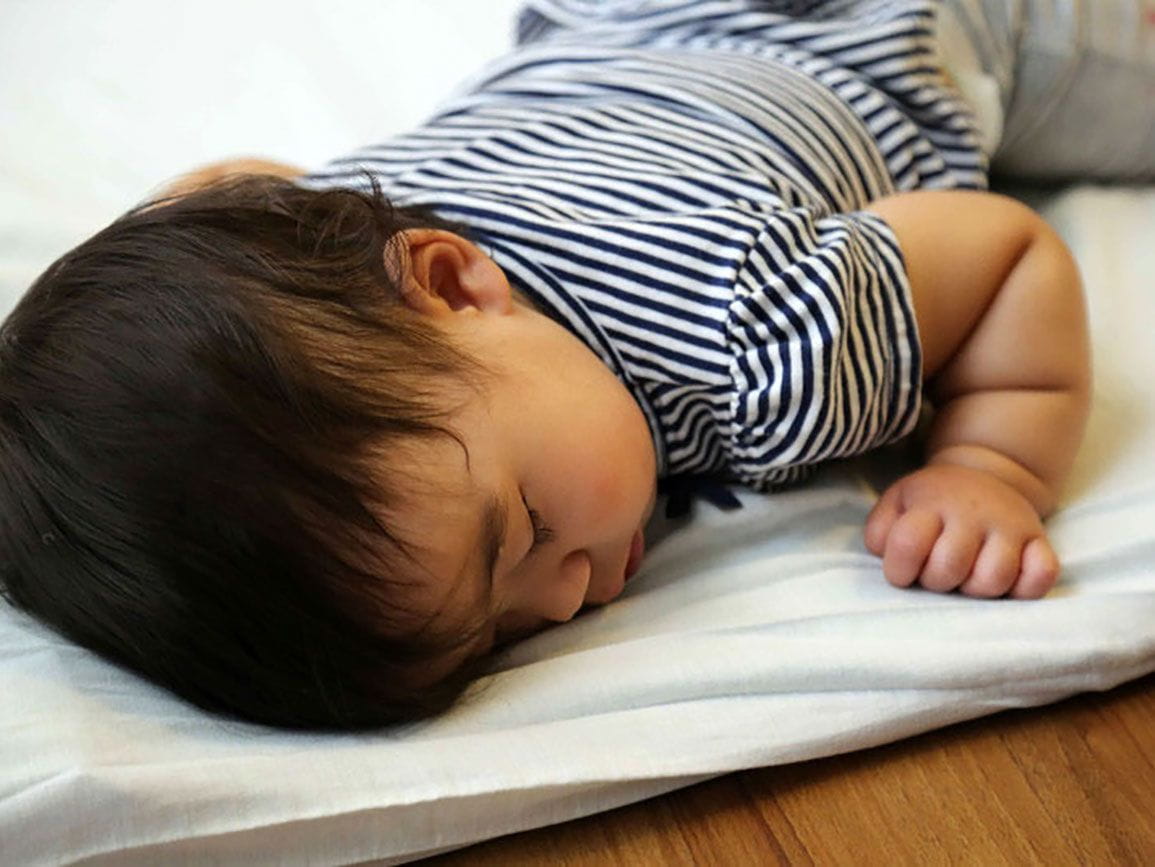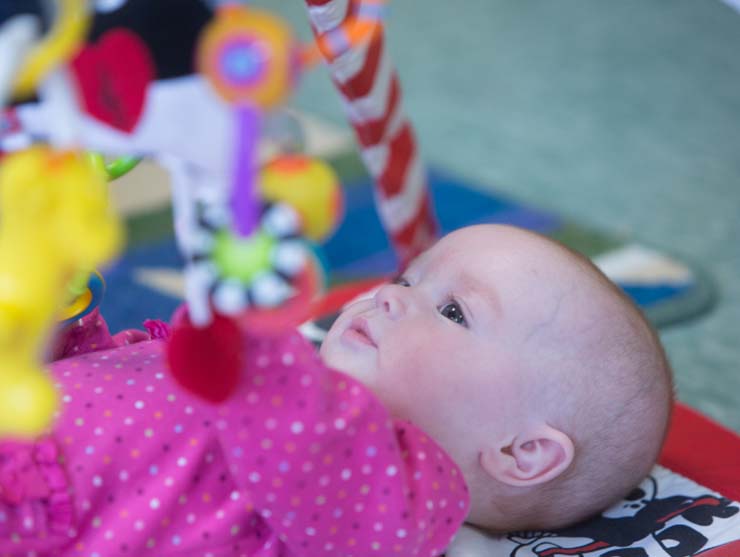Create an optimal environment to help your baby sleep through the night and nap during the day with these seven tips.
- Embrace daytime. If your baby sleeps all day, no one will get a good night’s sleep (your baby will need naps throughout the day, just not all day). If you’re inside, open the curtains or shades to let light in…or, go for a walk outside in the sunshine. Do stimulating activities, like playing, singing, or tummy time to keep your baby engaged. Then, at night, keep the lights dimmer and activities low key and quieter.
- Nix silence. With a newborn, there’s no need to tiptoe around while your baby is asleep or wait to do things like run the dishwasher, use the blender, and listen to music until he or she is awake. Your baby is used to louder noises…and a noise machine, such as something that plays white noise, can be helpful when naptime or bedtime rolls around.
- Create a sleep-inducing environment. A room ready for sleep should be on the darker and cooler side. Since it can be hard to fall asleep when it’s light, make sure your nursery or bedroom has curtains or shades that help block sunlight during the day and block moonlight or street lights at night. Temperature matters, too. If you don’t have a thermostat in the nursery, install an indoor thermometer to keep tabs on how warm or cool the room is—high 60s to low 70s is ideal.
- Get ready. Make sure you have everything you need before you start bedtime. Is the wireless speaker set up to play music? Do you have a book handy? Are the curtains closed? Are diapers, wipes, and extra blankets nearby? When you’re prepared for bedtime, you won’t have to get up in the middle of it. Since you’re likely to be feeding at night, be sure you have anything you need for that as well.
- Follow a routine…and be consistent. Your baby’s sleep schedule will be unique…and following a routine might not be possible until your baby’s no longer a newborn. But you can do things like play classical music or sing a soothing song when you think your baby’s getting tired, and he or she will start to learn that the music means sleep is coming soon. Once your baby’s older, try setting a bedtime and create a routine around it—like getting into sleepwear, reading a book, and eventually dimming and turning off the lights.
- Start early. Putting your baby to bed likely won’t be a quick process. If you want her to fall asleep by 7:30, work backwards to figure out what time you should start the bedtime routine. If she usually falls asleep, only to wake up crying five minutes later, make sure you account for that.
- Co-sleep safely. Having your baby sleep with you in your bed can increase parent-child attachment – and it might even help everyone get more sleep! But it can also make your bed crowded and delay your child’s independence. If you choose to co-sleep, keep in mind that you’ll need to make sure there isn’t a gap between your mattress and the headboard, remove any extra pillows, bedding, and blankets, and take other safety precautions.
Trying to get your baby to sleep through the night can be frustrating at first, but staying consistent, following a routine whenever possible, and taking the environment and your baby’s surroundings into account can help.





